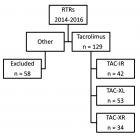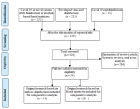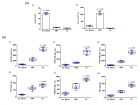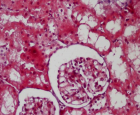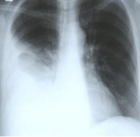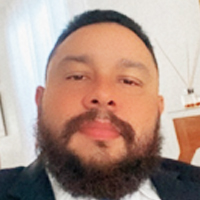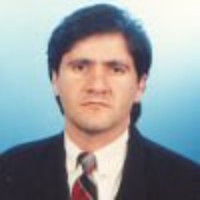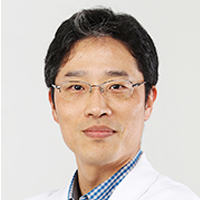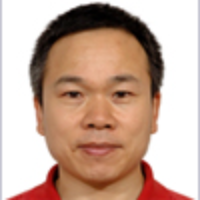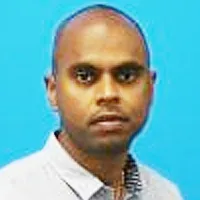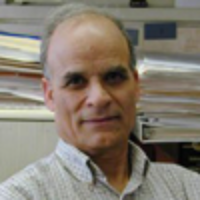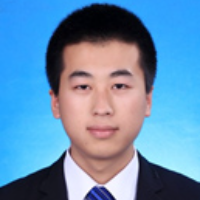Abstract
Research Article
Evaluation of Horizontal Lip Position in Adults with Different Skeletal Patterns: A Cephalometric Study
Rohit Kulshrestha*, Vinay V Umale, Kamlesh Singh, Aftab Azam and Madhvi Bhardwaj
Published: 10 March, 2017 | Volume 2 - Issue 1 | Pages: 009-016
Aim: To evaluate sexual dimorphism in horizontal lip position in adults with different skeletal patterns.
Material and Methods: The sample comprised of 120 patients (Females 18 years and above, Males 21 years and above) with no history of previous orthodontic treatment or functional jaw orthopaedic treatment. They were divided into different groups based on the ANB angle and gender. Group I and II included 30 males and 30 females with skeletal class I malocclusion (ANB 0-4 degree). Group III and IV included 30 males and 30 females with skeletal class II malocclusion respectively (ANB above 4 degree).
Results: When comparison between males and females (Class I+Class II) was done S-line (p<0.001), B-line (p<0.001), E-line (p<0.001), Holdaways angle (p<0.001) and Merrifield angle (p<0.001) were found to be statistically significant. S-line (p<0.001), E-line (p<0.001) and Holdaways angle (p<0.001) were found to be statistically significant when comparison was done between males and females (Class I). When comparison was done between males and females (Class II) only Holdaways angle (p<0.001) showed a significant statistical difference.
Conclusion: Sexual dimorphism was found in various lip parameters. Significant amount of differences were found between Class I and Class II (male and female) subjects.
Read Full Article HTML DOI: 10.29328/journal.johcs.1001005 Cite this Article Read Full Article PDF
Keywords:
Lip analysis; Soft tissue evaluation; Holdaways angle
References
- Hwang HS, Kim WS, McNamara JA Jr. A Comparative Study of Two Methods of Quantifying the Soft Tissue Profile. Angle Orthod. 2000; 70: 200-207. Ref.: https://goo.gl/y88lk3
- Subtelny JD. A longitudinal study of soft tissue facial structures and their profile characteristics, defined in relation to underlying skeletal structures. Am J Orthod. 1959; 45: 481-507. Ref.: https://goo.gl/FFsLJA
- Steiner CC. The use of cephalometrics as an aid to planning and assessing orthodontic treatment. Am J Orthod. 1960; 46: 721-735. Ref.: https://goo.gl/RRYxXM
- Ricketts RM. Esthetics, environment, and the law of lip relation. Am J Orthod. 1968; 54: 272-289. Ref.: https://goo.gl/8CalpE
- Burstone CJ. Integumental contour and extension patterns. Angle Orthod. 1959; 29: 93-104. Ref.: https://goo.gl/wGBb2X
- Holdaway RA. A soft tissue cephalometric analysis and its use in orthodontic treatment planning. Part I. Am J Orthod. 1983; 84: 1-28. Ref.: https://goo.gl/BuO2uF
- Sushner NI. A photographic study of the soft-tissue profile of the Negro population. Am J Orthod. 1977; 72: 373-385. Ref.: https://goo.gl/pSOzou
- Bowker WD, Meredith HV. A metric analysis of the facial profile. Angle Orthod. 1959; 29: 149-160. Ref.: https://goo.gl/wQoXYn
- Gulsen A, Okay C, Aslan BI, Uner O, Yavuzer R. The relationship between craniofacial structures and the nose in Anatolian Turkish adults: A cephalometric evaluation. Am J Orthod Dentofacial Orthop. 2006; 130: e15-e25. Ref.: https://goo.gl/F2T0NL
- Hwang HS, Kim WS, McNamara JA Jr. Ethnic Differences in the Soft Tissue Profile of Korean and European-American Adults with Normal Occlusions and Well-Balanced Faces. Angle Orthod. 2002; 72: 72-80. Ref.: https://goo.gl/8vlRPy
- Miyajima K, McNamara JA Jr, Kimura T, Murata S, Iizuka T. Craniofacial structure of Japanese and European-American adults with normal occlusions and well-balanced faces. Am J Orthod Dentofacial Orthop. 1996; 110: 431-438. Ref.: https://goo.gl/41WZWU
- Altemus LA. Comparative integumental relationships. Angle Orthod. 1963; 33: 217-221. Ref.: https://goo.gl/4yKqT4
- Mcnamara JA, Brust EW, Riolo ML. Soft tissue evaluation of individuals with an ideal occlusion and well balanced face. In Mcnamara JA Jr, editor. Esthetics and the treatment of facial form. Craniofacial growth series. Ann Arbor, Mich: center for human growth and development, The University of Michigan; 1992; 115-146.
- Erbay EF, Caniklioğlu CM, Erbay SK. Soft tissue profile in Anatolian Turkish adults: Part I. Evaluation of horizontal lip position using different soft tissue analyses. Am J Orthod Dentofacial Orthop. 2002; 121: 57-64. Ref.: https://goo.gl/p5mBeo
- Basciftci FA, Uysal T, Buyukerkmen A. Craniofacial structure of Anatolian Turkish adults with normal occlusions and well-balanced faces. Am J Orthod Dentofacial Orthop. 2004; 125: 366-372. Ref.: https://goo.gl/fgm2wF
- Merrifield LL. The profile line as an aid in critically evaluating facial esthetics. Am J Orthod. 1966; 52: 804-822. Ref.: https://goo.gl/rQFUpk
- Naidoo LC, Miles LP. An evaluation of the mean cephalometric values for orthognathic surgery for black South African adults. Part II: soft tissue. J Dent Assoc S Afr. 1997; 52: 545-550. Ref.: https://goo.gl/Lt24t4
- Lew KK, Ho KK, Keng SB, Ho KH. Soft-tissue cephalometric norms in Chinese adults with esthetic facial profiles. J Oral Maxillofac Surg. 1992; 50: 1184-1189. Ref.: https://goo.gl/O73723
- Alcalde RE, Jinno T, Orsini MG, Sasaki A, Sugiyama RM. Matsumura T. Soft tissue cephalometric norms in Japanese adults. Am J Orthod Dentofacial Orthop. 2000; 118: 84-89. Ref.: https://goo.gl/DSrcRT
- Scheideman GB, Bell WH, Legan HL, Finn RA, Reisch JS. Ceph- alometric analysis of dentofacial normals. Am J Orthod. 1980; 78: 404-420. Ref.: https://goo.gl/OXja61
- Yuen SWH, Hiranaka DK. A photographic study of the facial profile of southern Chinese adolescents. Quintessence International. 1989; 20: 665-676. Ref.: https://goo.gl/X6otoq
- Fernández-Riveiro P, Smyth-Chamosa E, Suárez-Quintanilla D, Suárez-Cunqueiro M. Angular Photogrammetric analysis of the soft tissue facial profile. Eur J Orthod. 2003; 25: 393-399. Ref.: https://goo.gl/zy5tU3
Figures:
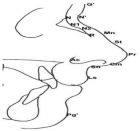
Figure 1
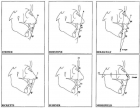
Figure 2
Similar Articles
-
Evaluation of Horizontal Lip Position in Adults with Different Skeletal Patterns: A Cephalometric StudyRohit Kulshrestha*,Vinay V Umale,Kamlesh Singh,Aftab Azam,Madhvi Bhardwaj. Evaluation of Horizontal Lip Position in Adults with Different Skeletal Patterns: A Cephalometric Study . . 2017 doi: 10.29328/journal.johcs.1001005; 2: 009-016
Recently Viewed
-
Prediction of neonatal and maternal index based on development and population indicators: a global ecological studySedigheh Abdollahpour,Hamid Heidarian Miri,Talat Khadivzadeh*. Prediction of neonatal and maternal index based on development and population indicators: a global ecological study. Clin J Obstet Gynecol. 2021: doi: 10.29328/journal.cjog.1001096; 4: 101-105
-
A Genetic study in assisted reproduction and the risk of congenital anomaliesKaparelioti Chrysoula,Koniari Eleni*,Efthymiou Vasiliki,Loutradis Dimitrios,Chrousos George,Fryssira Eleni. A Genetic study in assisted reproduction and the risk of congenital anomalies. Clin J Obstet Gynecol. 2021: doi: 10.29328/journal.cjog.1001095; 4: 096-100
-
Leiomyosarcoma in pregnancy: Incidental finding during routine caesarean sectionToon Wen Tang*,Phoon Wai Leng Jessie. Leiomyosarcoma in pregnancy: Incidental finding during routine caesarean section. Clin J Obstet Gynecol. 2021: doi: 10.29328/journal.cjog.1001094; 4: 092-095
-
Adult Neurogenesis: A Review of Current Perspectives and Implications for Neuroscience ResearchAlex, Gideon S*,Olanrewaju Oluwaseun Oke,Joy Wilberforce Ekokojde,Tolulope Judah Gbayisomore,Martina C. Anene-Ogbe,Farounbi Glory,Joshua Ayodele Yusuf. Adult Neurogenesis: A Review of Current Perspectives and Implications for Neuroscience Research. J Neurosci Neurol Disord. 2024: doi: 10.29328/journal.jnnd.1001102; 8: 106-114
-
Late discover of a traumatic cardiac injury: Case reportBenlafqih C,Bouhdadi H*,Bakkali A,Rhissassi J,Sayah R,Laaroussi M. Late discover of a traumatic cardiac injury: Case report. J Cardiol Cardiovasc Med. 2019: doi: 10.29328/journal.jccm.1001048; 4: 100-102
Most Viewed
-
Evaluation of Biostimulants Based on Recovered Protein Hydrolysates from Animal By-products as Plant Growth EnhancersH Pérez-Aguilar*, M Lacruz-Asaro, F Arán-Ais. Evaluation of Biostimulants Based on Recovered Protein Hydrolysates from Animal By-products as Plant Growth Enhancers. J Plant Sci Phytopathol. 2023 doi: 10.29328/journal.jpsp.1001104; 7: 042-047
-
Sinonasal Myxoma Extending into the Orbit in a 4-Year Old: A Case PresentationJulian A Purrinos*, Ramzi Younis. Sinonasal Myxoma Extending into the Orbit in a 4-Year Old: A Case Presentation. Arch Case Rep. 2024 doi: 10.29328/journal.acr.1001099; 8: 075-077
-
Feasibility study of magnetic sensing for detecting single-neuron action potentialsDenis Tonini,Kai Wu,Renata Saha,Jian-Ping Wang*. Feasibility study of magnetic sensing for detecting single-neuron action potentials. Ann Biomed Sci Eng. 2022 doi: 10.29328/journal.abse.1001018; 6: 019-029
-
Pediatric Dysgerminoma: Unveiling a Rare Ovarian TumorFaten Limaiem*, Khalil Saffar, Ahmed Halouani. Pediatric Dysgerminoma: Unveiling a Rare Ovarian Tumor. Arch Case Rep. 2024 doi: 10.29328/journal.acr.1001087; 8: 010-013
-
Physical activity can change the physiological and psychological circumstances during COVID-19 pandemic: A narrative reviewKhashayar Maroufi*. Physical activity can change the physiological and psychological circumstances during COVID-19 pandemic: A narrative review. J Sports Med Ther. 2021 doi: 10.29328/journal.jsmt.1001051; 6: 001-007

HSPI: We're glad you're here. Please click "create a new Query" if you are a new visitor to our website and need further information from us.
If you are already a member of our network and need to keep track of any developments regarding a question you have already submitted, click "take me to my Query."






